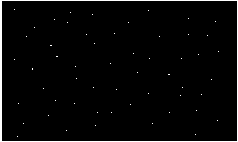Both DVI and HDMI are capable of supporting the highest video resolutions possible today, yet the use of small-gauge copper twisted pair instead of coaxial cables, lead to serious constraints vis-à-vis long cable runs.
DVI is limited to a maximum of 15 feet (5 meters). HDMI is designed to perform better over longer lengths - up to about 50 feet or 15 meters, but actual performance constraints are similar to DVI. But these maximum cable runs are highly dependent - amongst others - on both the maximum signal bit-rate that one needs to handle as well as the DVI or HDMI cable built quality.
As already expressed elsewhere on our site, the problem with twisted pair is that it is not possible to maintain tight control over impedance. Poor impedance control leads to signal reflections along a DVI or HDMI cable between source and sink, interfering with the bitstream originating from the source.
There is also the distortion effect of cable impedance on the leading and trailing edges of the transitions in voltage representing the digital data; this distortion increases drastically with distance up to a point where it may be hard for the receiver to reconstruct the original bitstream.
In digital standards where no error correction is used, the end result is loss of information. As long as the level of errors is contained, DVI and HDMI cables would still perform in that the display will still be ability to re-constitute the image. However, errors would often show as 'pixel-dropouts', or 'sparkles'. Increase the length slightly further beyond the point at which sparkles start to appear, and you would soon end up with no image at all.
But even if you would still get an image, the presence of sparkles and other image degradation artifacts will surely lead to an unpleasant viewing experience. HDTV is 'either all or nothing'; if you arrive at a point with your DVI or HDMI cable where sparkles start to show up on your display, you need to look elsewhere for a solution to extend your HDTV.
 ¡Bienvenido a mundodvd! Regístrate ahora y accede a todos los contenidos de la web. El registro es totalmente gratuito y obtendrás muchas ventajas.
¡Bienvenido a mundodvd! Regístrate ahora y accede a todos los contenidos de la web. El registro es totalmente gratuito y obtendrás muchas ventajas.


 LinkBack URL
LinkBack URL About LinkBacks
About LinkBacks

 Citar
Citar
 y que disfrutes mucho de ese pedazo de lector
y que disfrutes mucho de ese pedazo de lector 







